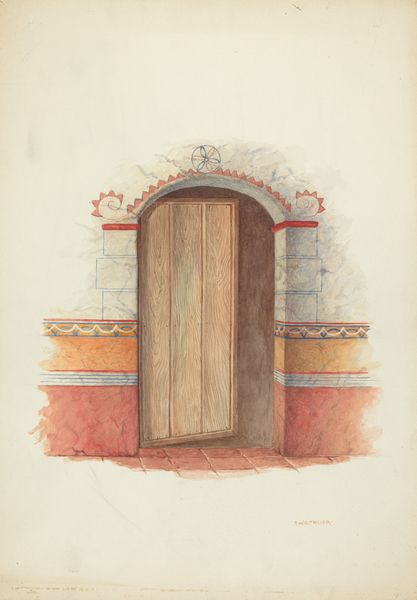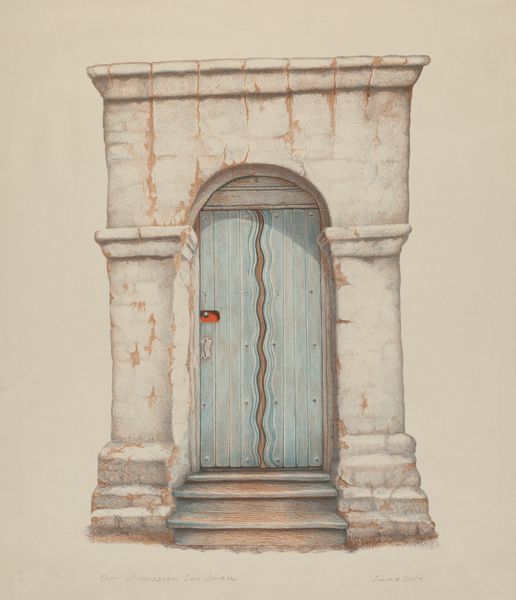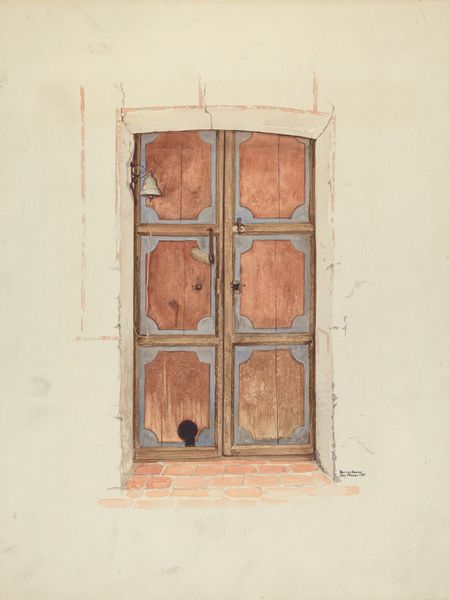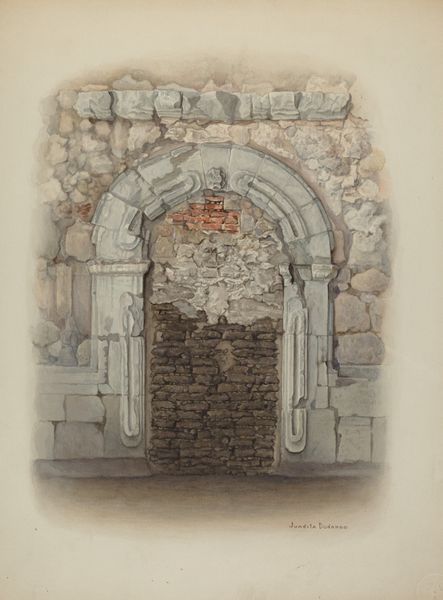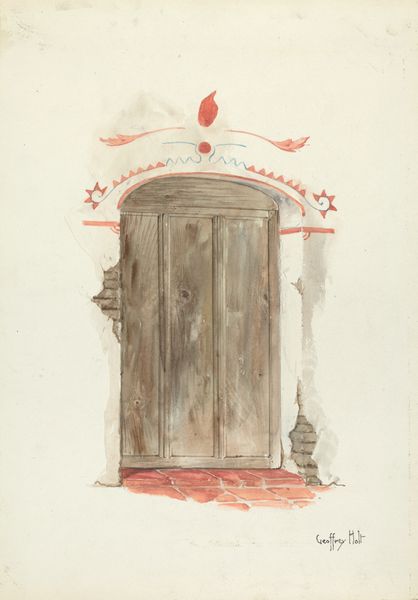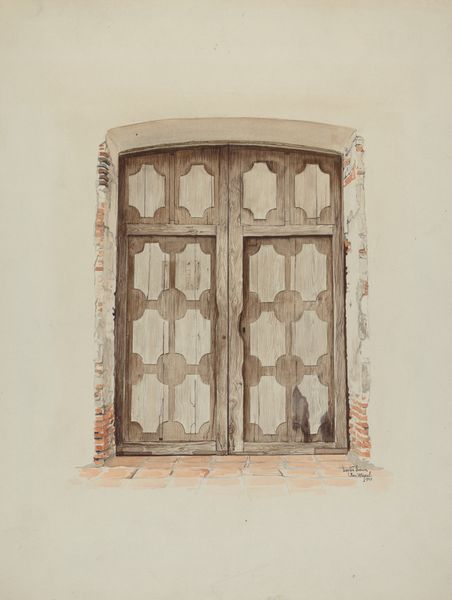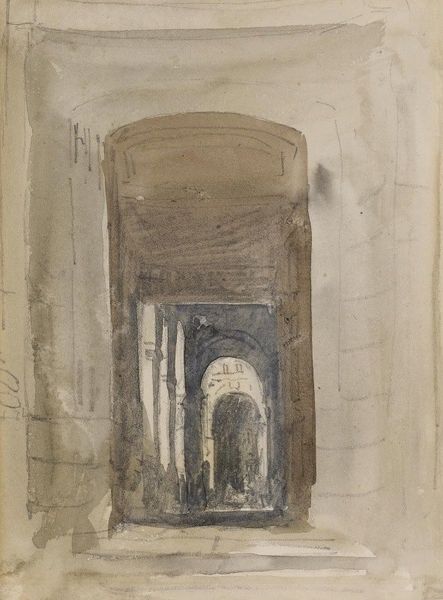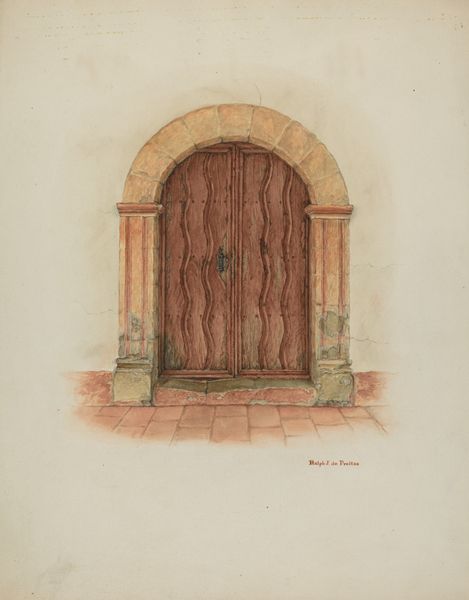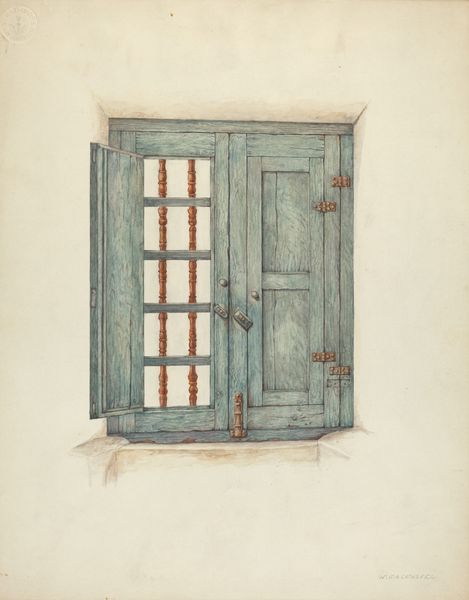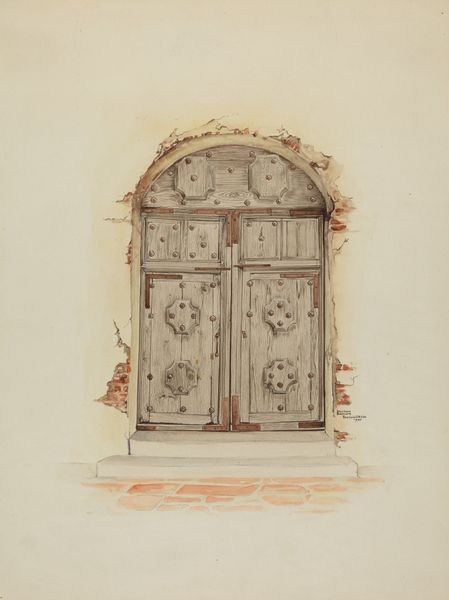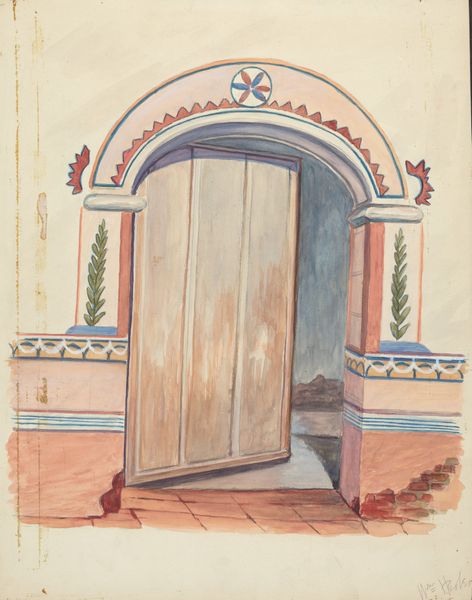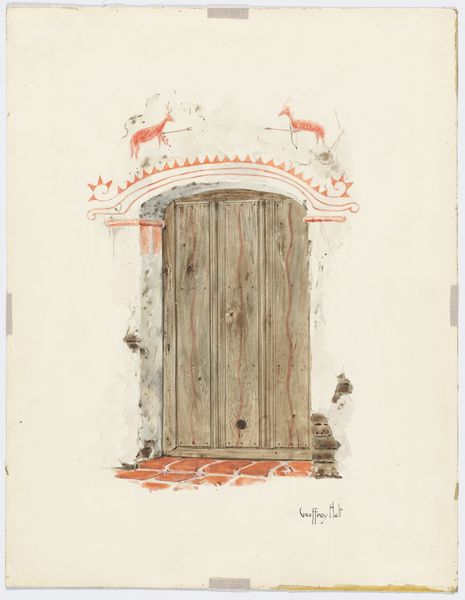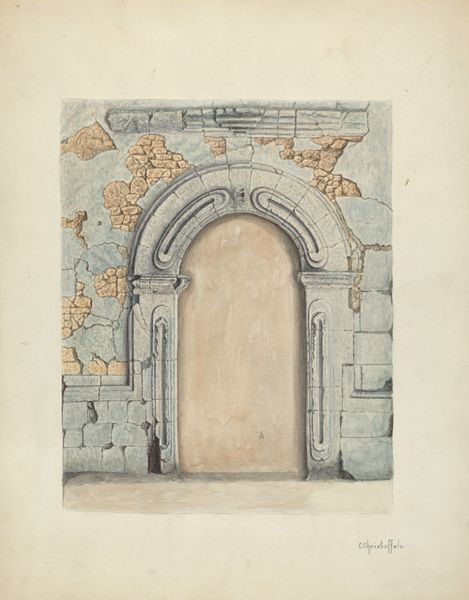
drawing, charcoal
#
drawing
#
landscape
#
charcoal drawing
#
geometric
#
charcoal
#
academic-art
#
realism
Dimensions: overall: 39.4 x 34.3 cm (15 1/2 x 13 1/2 in.)
Copyright: National Gallery of Art: CC0 1.0
Curator: Here we have June Dale's "Mission Door San Juan," a charcoal drawing, dating from between 1935 and 1942. Editor: Well, isn’t that a whisper of a memory. The weathered stone and aged wood create such a palpable sense of history. It's almost like staring at a forgotten photograph. Curator: Precisely! Dale's work frequently depicted architectural scenes of the Southwest. The image carries echoes of the Spanish colonial past and, in the context of its creation during the Depression era, such scenes functioned to link present-day hardship to an idealised vision of a settled past. Editor: So, the ruins almost offer a sort of…stability? A solid base in a time of shifting sands. I see what you mean, and it adds to the impact. You’ve got this old door, the layers of its existence adding textures which almost beg you to touch them, imagine the hands that pushed that thing open every day for a hundred years. Curator: Note the stark contrast between the crumbling facade of the archway and the solidity of the door itself, it perhaps alludes to both the impermanence and endurance of institutions. Consider too, Dale's meticulous rendering using charcoal. Editor: It is gorgeous, a celebration of imperfection if you ask me. The light is also extraordinary – it gives everything a feeling of serene abandonment, I can hear the desert wind rustling against the aged lock on the door, feel the heat baking into the wood itself. I can stare at it forever. Curator: It’s a study in decay and permanence, certainly. The mission door becomes a symbolic threshold, not just of a building but of historical narratives. We have to remember that during the time, The Arts and crafts movement revived construction ideas in relation to the old buildings from Southwest. The old and sturdy looks provided solace, connecting the people in search of old-time security. Editor: Interesting, you can tell. Thinking about that now, I see almost see it. It is like the mission offers stability. Curator: I'm struck, once again, by how historical and cultural context enriches the visual experience. Editor: Agreed. The longer we observe it, the more tales it unfolds – history isn’t ever truly behind closed doors; rather, it peeks from every mark, crack and material layer that shapes what is right in front of us.
Comments
No comments
Be the first to comment and join the conversation on the ultimate creative platform.

